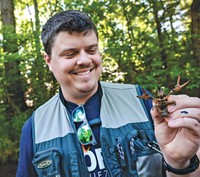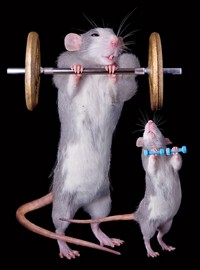Advertisement
Grab your lab coat. Let's get started
Welcome!
Welcome!
Create an account below to get 6 C&EN articles per month, receive newsletters and more - all free.
It seems this is your first time logging in online. Please enter the following information to continue.
As an ACS member you automatically get access to this site. All we need is few more details to create your reading experience.
Not you? Sign in with a different account.
Not you? Sign in with a different account.
ERROR 1
ERROR 1
ERROR 2
ERROR 2
ERROR 2
ERROR 2
ERROR 2
Password and Confirm password must match.
If you have an ACS member number, please enter it here so we can link this account to your membership. (optional)
ERROR 2
ACS values your privacy. By submitting your information, you are gaining access to C&EN and subscribing to our weekly newsletter. We use the information you provide to make your reading experience better, and we will never sell your data to third party members.
Food Science
Newscripts
Cell-grown sushi and how the buddy system protects fish
by Gina Vitale
August 30, 2021
| A version of this story appeared in
Volume 99, Issue 31
Salmon, fresh from the cultivator

If you want to sit down to a nice plate of sushi, first someone has to catch the fish—or do they? Cofounders of the San Francisco–based start-up Wildtype think there’s another way to put a serving of seafood on your plate—by growing it from cells.
The process starts with cells from Pacific salmon, grown in cultivators that look like beer-brewing tanks. And to help the growing cells achieve the right structure, so that they look and feel like salmon meat, Wildtype has developed plant-based scaffolding around which the cells organize and mature over a period of a few weeks. Plenty of factors affect the flavor and texture of the product, including nutrients for the cell growth and the underlying structure of the scaffold.
Adjusting the variables to create the ideal product involved some trial and error, according to Wildtype cofounder Aryé Elfenbein. It’s daunting to recreate, in just a few years, the complexity of salmon that evolved over eons, he tells Newscripts. It “felt like we were building the ship as we were sailing it.”
And then there’s the big question: Is it actually salmon? “The DNA in our product is genetically indistinguishable from conventional salmon,” says Elfenbein. And in the sushi world, says cofounder Justin Kolbeck, “you’d be very hard-pressed to tell the difference between our product and conventional salmon.” But key differences remain—namely, many of the undesirable parts of the seafood supply are missing from Wildtype’s product, Kolbeck says: “things like mercury and microplastics and antibiotics and parasites.” These are “things that we accept with sort of a grimace almost as just kind of part and parcel of our seafood supply,” Kolbeck says, “that won’t be part of our process.”
So far, Wildtype has focused on optimizing its processes for raw preparations, such as salmon used in sushi. And soon, those interested might be able to try it. Wildtype is planning to open a tasting room next to its pilot production facility in the Dogpatch neighborhood of San Francisco in September. Keep an eye out sushi enthusiasts: Kolbeck says Wildtype salmon could one day be available to buy in a grocery store near you.
Piscine pals offer predator protection

Many of us feel a little bit safer when we’re flanked by buddies. For fish, having a social squad may actually help them evade predators, according to a study in Communications Biology (2021, DOI: 10.1038/s42003-021-02407-4). Lauren Nadler, now an assistant professor at Nova Southeastern University, conducted a study on fish social behavior while she was a graduate student at James Cook University. She found that groups of fish who were friends, meaning that they had 3 weeks to get familiar with each other, responded to a simulated predator better than groups of fish who were introduced to each other right before testing.
When a simulated bird beak—in this case, a tapered test tube wrapped in black tape—was dropped toward the testing arena, the fish friends reacted faster and swam farther away than the recently acquainted fish. That reaction gives those fish an advantage in survival, Nadler says. “Those fish that reacted quicker and moved faster would be more likely to be able to sort of outcompete these predators that are trying to eat them,” she tells Newscripts.
Nadler thinks this is all about trust. “I think one of the reasons that the familiar groups work together better is that, not only do they know what everybody else is going to do, but they kind of trust in the information that they’re getting from their social partners,” she says. While further research is required, she says it’s possible that other animals experience similar advantages by having an entourage. This Newscriptster is going to buddy up, just in case!
Please send comments and suggestions to newscripts@acs.org.





Join the conversation
Contact the reporter
Submit a Letter to the Editor for publication
Engage with us on Twitter